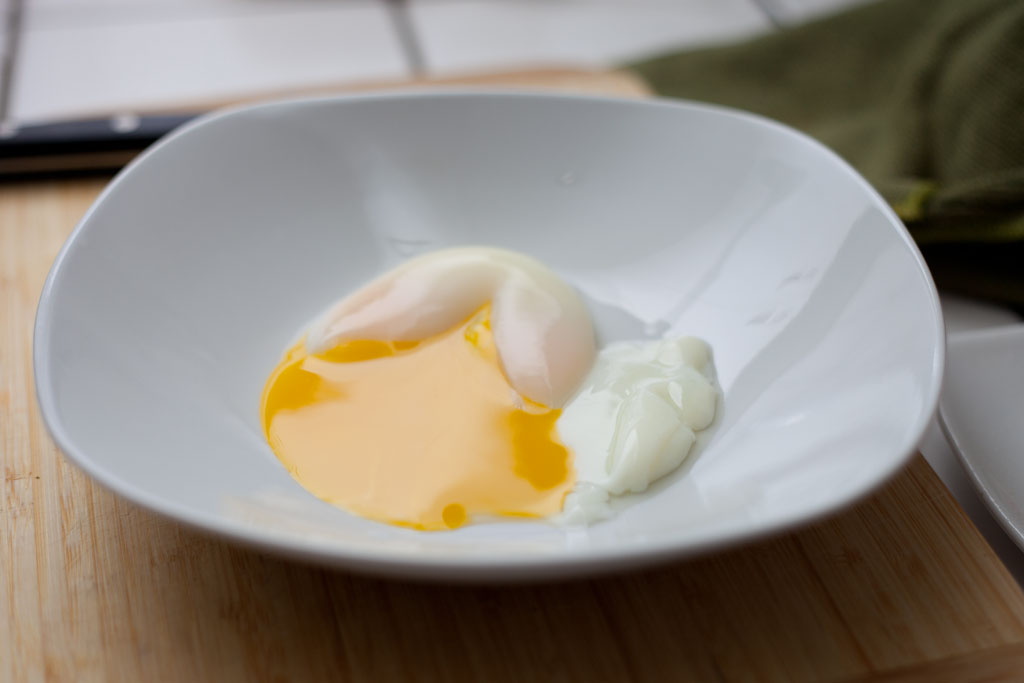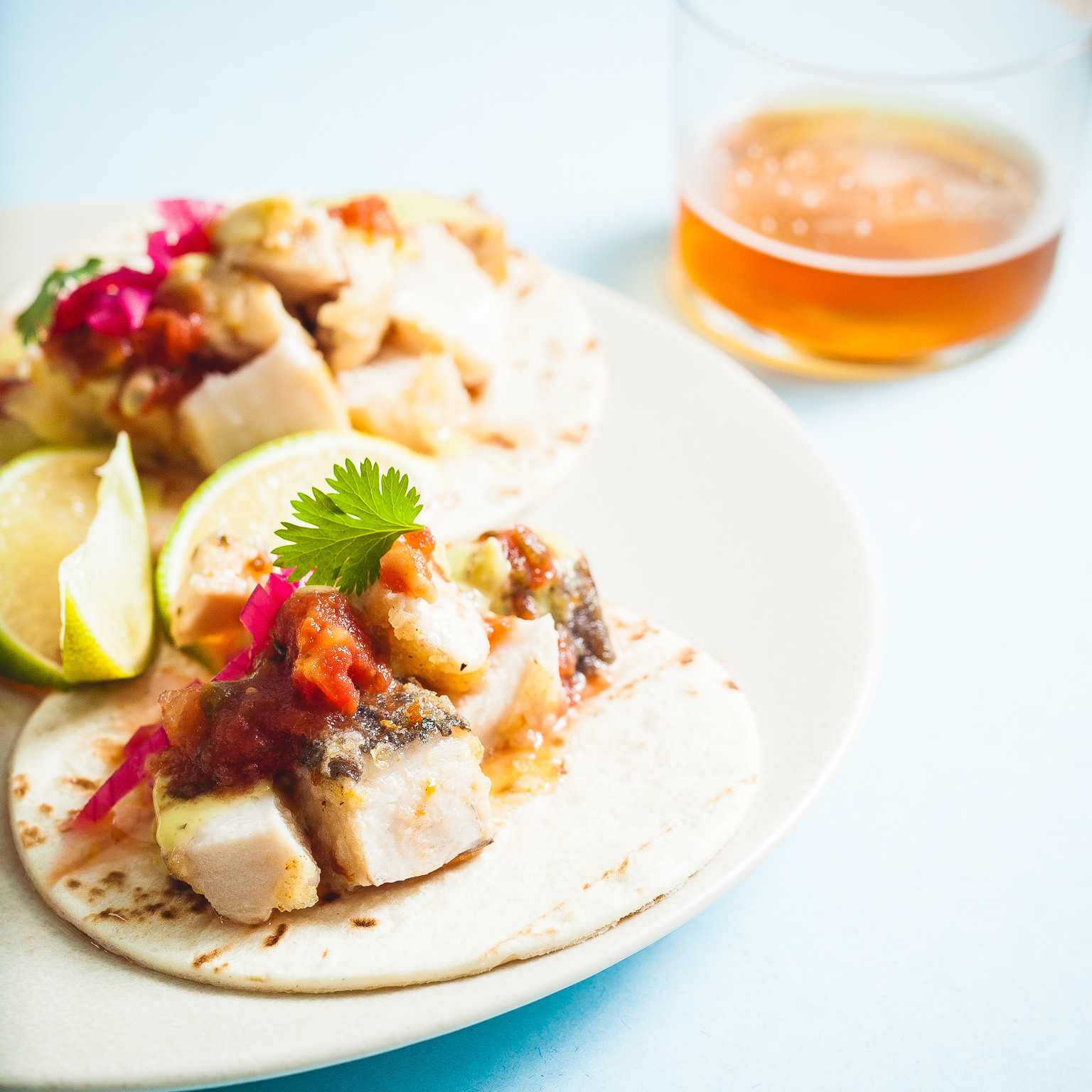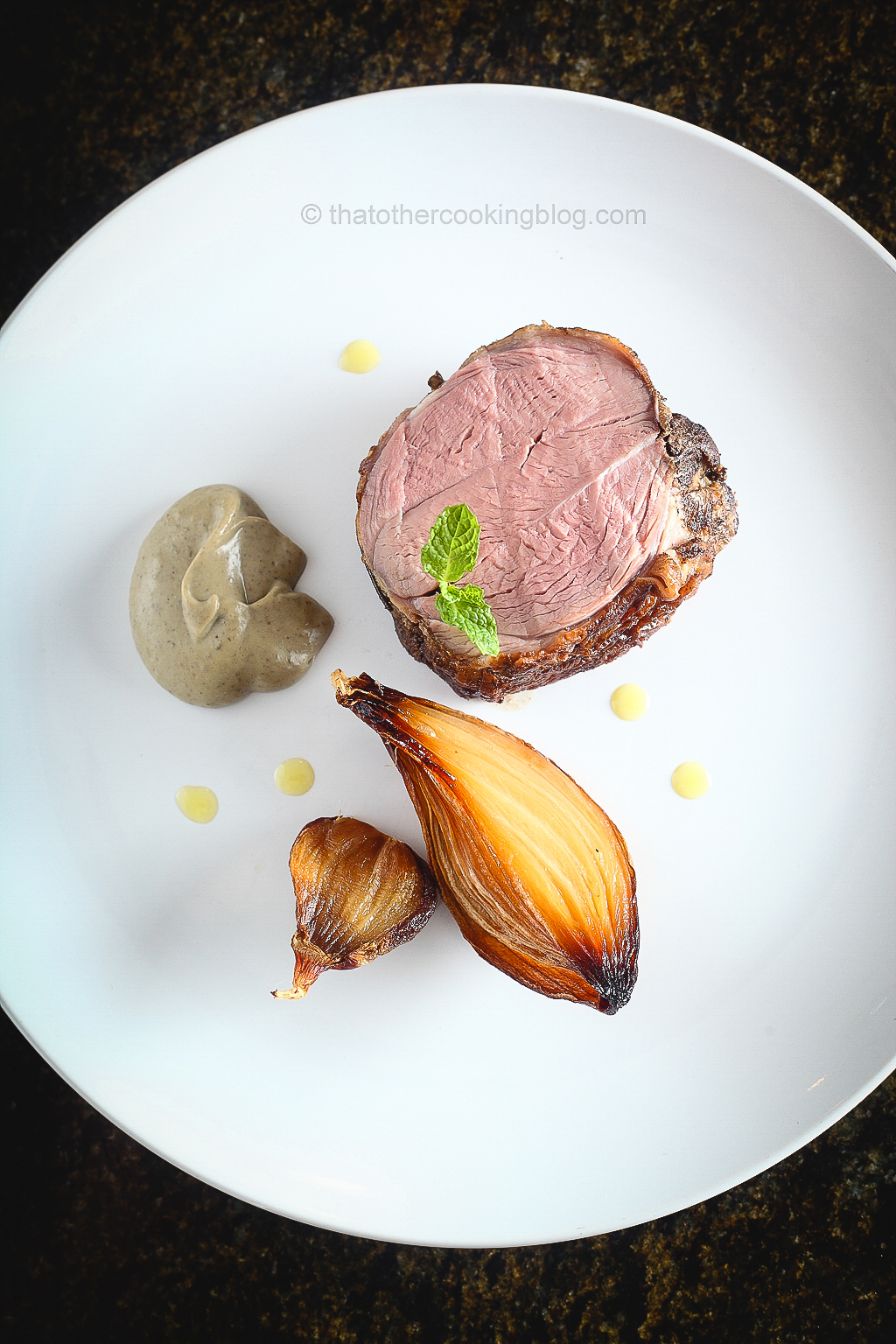Not sure if perfect is the right word here since perfection when it comes to food and especially eggs is very subjective. I do like my eggs soft and tender and I am a fan of soft-boiled eggs but I’m not everybody so if you aren’t into runny yolks, exit now or stick around and this might change how you feel about these oozy guys. Cooking sous vide can be a bit strange in the beginning but there’s nothing strange about this cooking method. It’s been used in the food industry and some high-end restaurants for a few decades now and it’s becoming fairly common in home kitchens due to less expensive technology readily available.
Cooking an egg is the perfect starting point for anyone interested in trying sous vide 101. Sous vide cooking requires vacuum sealing food in plastic bags. Eggs can be cooked in their own shell, making this cooking experiment as easy as it gets.
An immersion circulator is a very convenient piece of equipment to do this, but a good thermometer, a pot, some water and some careful attention can do too.
Egg whites set at a different temperature than yolks do:
Whites set at 80°C
Yolks set at 70°C
Just 10 degrees apart. Awesome, this means that yolks can be set while keeping the whites a bit softer. This can only be done by controlling the cooking water temperature carefully. If we hold the water at 70°C long enough, the yolk will be set (not overcooked which turns a bit greenish, has an off flavor, and its texture is dry) while the whites will still be slightly softer than hard boiled.
The poached egg consistency can be a tricky thing to achieve using the sous vide technique. Whites usually need to set while the yolks are still runny. This means that in order to cook eggs this way, we must rely on carry-over heat which isn’t really what sous vide cooking is about. If you want poached eggs, poach them, Heston Blumenthal has a really good tutorial on youtube.
Soft boiled eggs, on the other hand, are a great example of sous vide cooking. Because we want both the white and the yolk cooked only enough to have a great soft consistency. So here is what I did:
01: Add water to the container and set immersion circulator to 63°C
02: Wait until the temperature is stable and add eggs.
03: cook eggs for an hour.
04: drop eggs in the ice bath for 30 seconds.
05: serve. The eggs should slip off their shells effortlessly.
There are tons of great references on sous vide cooking on the web if you are interested:
http://www.edinformatics.com/math_science/science_of_cooking/eggs_sous_vide.htm
http://freshmealssolutions.com/index.php?option=com_k2&view=item&id=65:search-perfect-e
http://blog.khymos.org/2009/04/09/towards-the-perfect-soft-boiled-egg/
And… my all time favorite:
http://www.cookingissues.com/primers/sous-vide/
Leave your comments or questions below! cheers!
Wanna get more sous-vide cooking guides and cool cooking how-to’s in your mailbox? You know what needs to be done!
We never spam. You should only be getting updates when new content is posted on the site. We also respect your privacy. We don’t share your email address with anyone and you can unsubscribe anytime!










3 comments
Great so see more sous-vide posts!
A 63-degree egg is very much soft-boiled with also the white soft, so I prefer 64.5. But as you wrote, that is very subjective.
The ‘setting’ temperature of eggs is quite complicated by the way, as both white and yolk consist of different proteins all with their own temperature.
agreed! didn’t get into the chemical properties of egg proteins, that’s quite an extensive subject but the info is out there, I added a few good links at the bottom and only listed the 2 temperatures at which yolks and whites finally coagulate (approximately) as reference. thanks for checking in!